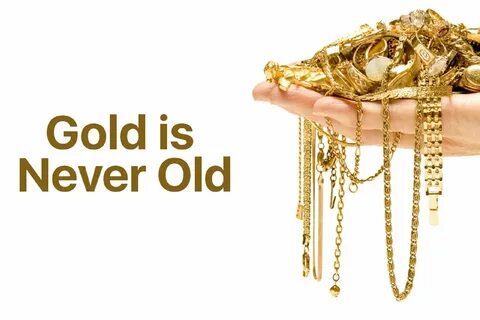Gold metal, also known as one of the most valuable and sought-after metals in the world, holds a special place in the investment world. Its unique properties and historical significance make it a highly attractive option for investors looking to diversify their portfolios. In this article, we will explore the various benefits of investing in gold metal and why it is considered a valuable asset for long-term financial security. Whether you are a seasoned investor or new to the world of investing, understanding the advantages of adding gold to your investment portfolio can be a key factor in achieving your financial goals.
Investing in gold metal has a number of benefits. Gold is a reliable store of value and can act as a hedge against inflation. It also has a strong track record of long-term price appreciation. Additionally, gold is a tangible asset that can provide a sense of security during times of economic uncertainty. It can also provide diversification within an investment portfolio, as its value does not always move in sync with other assets such as stocks and bonds. Overall, investing in gold metal can be a valuable addition to a well-rounded investment strategy.
The History and Significance of Gold Metal

Gold has long been prized for its beauty, rarity, and versatility. It is a highly sought-after metal that has been used for various purposes, including jewelry, coinage, and as a store of value. In addition to its aesthetic appeal, gold also has industrial applications, particularly in electronics and medical equipment. The mining and extraction of gold have raised environmental concerns due to the use of toxic chemicals and habitat destruction. Despite these challenges, the demand for gold continues to drive innovation in mining technologies and sustainable practices.
Gold has been highly valued for thousands of years, dating back to ancient civilizations such as the Sumerians and Egyptians who used it for jewelry and decorative objects. In addition to its aesthetic appeal, gold has also been used as a form of currency and a symbol of wealth and power.
The significance of gold has continued throughout history, with gold being used as the standard for currency and being traded as a precious metal on financial markets. It has also been used as a safe haven for investors during times of economic uncertainty.
In addition to its historical and financial significance, gold also holds cultural and spiritual importance in many societies. It has been used in religious rituals and as a symbol of purity and virtue.
Overall, the history and significance of gold as a metal is vast and varied, spanning across different cultures and time periods. Its enduring appeal and value have solidified its place as one of the most coveted and revered metals in human history.
The Properties and Uses of Gold in Various Industries

Gold is a highly versatile and valuable metal that is used in various industries for a multitude of purposes. Its properties, such as its malleability, conductivity, and resistance to corrosion, make it an ideal material for a wide range of applications.
In the electronics industry, gold is used for its excellent conductivity and resistance to corrosion, making it an ideal material for use in connectors, switches, and other components. It is also used in the manufacturing of semiconductors and other electronic devices.
In the medical industry, gold is used in a variety of applications, including in the production of medical devices such as stents, implants, and electrodes, as well as in the treatment of certain types of cancer through a process known as radiotherapy.
In the aerospace industry, gold is used in the production of satellite components, as well as in the coating of spacecraft components to protect them from the harsh conditions of space.
In the jewelry industry, gold is perhaps most well-known for its use in the production of fine jewelry and decorative items. Its luster, durability, and rarity make it a highly prized material for creating luxury goods.
Overall, the unique properties of gold make it a valuable and essential material for a wide range of industries, from electronics and medical devices to aerospace and jewelry. Its uses in these industries are diverse and essential, making it a highly sought-after metal in the global market.
Investing in Gold: A Guide for Beginners

Investing in gold can be a good way to diversify your portfolio and protect yourself against inflation. There are several ways to invest in gold, including buying physical gold, investing in gold mining stocks or exchange-traded funds (ETFs) that track the price of gold. It’s important to do your research and consider your investment goals before diving into the world of gold investing. Keep in mind that the price of gold can be volatile, so it’s important to be prepared for potential fluctuations in the market. Overall, gold can be a valuable addition to a well-rounded investment strategy.
The Environmental Impact of Gold Mining and Extraction

Gold mining and extraction have significant environmental impacts, including the destruction of natural habitats, soil erosion, and the release of toxic chemicals into the environment. The use of heavy machinery and explosives can disrupt local ecosystems and degrade surrounding water sources. Additionally, the leaching of cyanide and other chemicals used in the extraction process can contaminate soil and water, posing serious risks to both human health and wildlife. Furthermore, the process of extracting gold produces large amounts of waste material, known as tailings, which can create long-lasting pollution and environmental damage. Overall, the environmental impact of gold mining and extraction is a serious concern that needs to be managed and mitigated through sustainable and responsible practices.
The Cultural and Symbolic Importance of Gold
Gold has been valued and revered across various cultures and societies for centuries. Its rarity, durability, and aesthetic appeal have made it a symbol of wealth, power, and prestige. In many ancient civilizations, such as in Egypt and Mesopotamia, gold was associated with the divine and was used in religious rituals and offerings to the gods.
Gold has also been used as a form of currency and a means of trade, solidifying its importance in economic systems. The enduring value of gold has made it a popular choice for jewelry and adornments, signifying status and luxury.
In addition to its material worth, gold holds significant symbolic meanings in many cultures. It is often associated with purity, immortality, and the sun. In Chinese culture, gold symbolizes wealth and prosperity, and is often used in traditional ceremonies and weddings.
Overall, gold’s cultural and symbolic significance transcends its physical properties, making it a revered and treasured element across the world.
The Role of Gold in Monetary Systems Throughout History
See also: detect metal detectors
Throughout history, gold has played a significant role in various monetary systems. Its scarcity, durability, and unique properties have made it a valuable medium of exchange and store of value for thousands of years. Various civilizations, from ancient Egyptians to the Roman Empire, used gold as a form of currency.
In the modern era, the gold standard was established, where the value of a country’s currency was directly linked to a specific amount of gold. This system was prominent during the 19th and early 20th centuries, providing stability to international monetary systems. However, this system was gradually abandoned in the 20th century, with many countries shifting towards fiat currencies that are not backed by a physical commodity like gold.
Despite the shift away from the gold standard, gold continues to hold significance in the global economy. Central banks and investors alike view gold as a safe-haven asset during times of economic uncertainty. Its role as a hedge against inflation and currency devaluation has ensured its enduring relevance in monetary systems throughout history. Today, gold remains a key component of central bank reserves and is actively traded in financial markets around the world.
Gold: A Precious Commodity and Its Market Trends
Gold is a popular precious metal with a wide range of uses, including jewelry, investment, and industrial applications. Its value is driven by supply and demand dynamics, inflation, geopolitical tensions, and currency fluctuations. The gold market is influenced by international economic and political events, and its price often serves as a barometer for global economic stability. Investment in gold can provide a hedge against inflation and market volatility. Over the years, gold has maintained its status as a safe haven asset. Its market trends are closely monitored by investors, traders, and central banks worldwide.
The Chemistry and Alloys of Gold Metal
Gold is a chemical element with the symbol Au (from Latin: aurum) and atomic number 79, making it one of the higher atomic number elements that occur naturally. It is a dense, soft, shiny, malleable, and ductile metal with a bright yellow color and luster that is considered attractive, which is maintained without tarnishing in air or water. Chemically, gold is a transition metal and a group 11 element. It is one of the least reactive chemical elements and is solid under standard conditions. Gold often occurs in free elemental (native) form, as nuggets or grains, in rocks, in veins, and in alluvial deposits. It occurs in a solid solution series with the native element silver and also naturally alloyed with copper and palladium. These different forms of gold metals can exhibit various properties and are utilized in a wide range of applications.
Exploring the Geological Formation of Gold Deposits
Exploring the geological formation of gold deposits involves studying the conditions and processes that lead to the concentration of gold in specific areas. This includes understanding the role of tectonic activity, hydrothermal processes, and erosion in the formation of gold deposits. Geologists also examine the types of rocks and mineralization associated with gold deposits, as well as the geological structures and environments where gold is likely to be found. This research is crucial for identifying new gold exploration targets and understanding the potential for future gold discoveries.
The Future of Gold: Innovations and Technologies in Mining
The Future of Gold: Innovations and Technologies in Mining is a book that delves into the advancements and breakthroughs in the mining industry. It explores the latest technologies and innovations that are shaping the future of gold mining, including advancements in exploration, extraction, and processing. The book also discusses the potential impact of these innovations on the industry as a whole, and the opportunities and challenges they present. It provides valuable insights for professionals and stakeholders in the mining sector, as well as anyone with an interest in the future of gold mining.
In conclusion, it is clear that investing in gold metal offers a myriad of benefits, including its ability to act as a hedge against economic uncertainty and inflation, as well as its long-term value retention. Whether it’s through physical ownership or investing in gold-related stocks and funds, incorporating gold into an investment portfolio can be a smart move for diversification and stability. As the saying goes, “all that glitters is not gold,” but in the case of investing, the allure of gold metal is certainly well-founded.
See also

